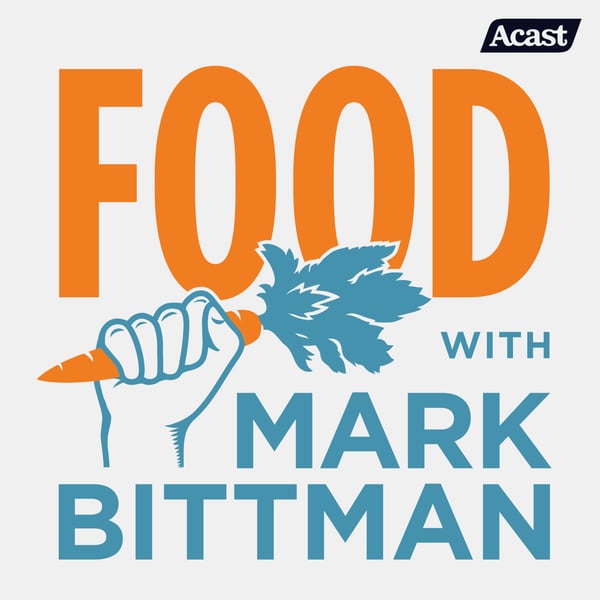Julian Baggini: How the World Eats
Food with Mark Bittman
Sweetness and Light
4.9 • 947 Ratings
🗓️ 5 March 2025
⏱️ 40 minutes
🧾️ Download transcript
Summary
The philosopher and journalist talks to Mark about why the big picture surrounding food confuses people, and what we can do to remedy that dynamic; what surprised him most in his research around the global food landscape; and 'food citizens' vs 'food consumers.'
Read an excerpt from Julian Baggini's new book, 'How the World Eats,' on the Bittman Project: https://bittmanproject.com/how-the-world-eats/
Subscribe to Food with Mark Bittman on Apple Podcasts, Spotify, or wherever you like to listen, and please help us grow by leaving us a 5 star review on Apple Podcasts.
Follow Mark on Twitter at @bittman, and on Facebook and Instagram at @markbittman. Want more food content? Subscribe to The Bittman Project at www.bittmanproject.com.
Hosted on Acast. See acast.com/privacy for more information.
Transcript
Click on a timestamp to play from that location
| 0:00.0 | Welcome to food. I'm Kate Bitman. I hope you've been enjoying the show. If you'd like to engage with us more, |
| 0:09.3 | please check out bitmanproject.com, our internet home, where we offer you more than 1,500 recipes |
| 0:15.7 | and food writing that runs the gamut, policy, cooking, how-toes, and personal essays from some of our |
| 0:22.2 | favorite cooks and writers. It's turning into a vibrant community that we're proud of. We'd |
| 0:27.2 | love to have you join us. And if you have any questions for us, you can reach us at food at |
| 0:32.2 | markbitman.com. Cornflakes Cornflakes are relatively simple by the standards of modern breakfast cereals. |
| 0:55.8 | Apart from the added vitamins and minerals, the most famous brand has only four ingredients, |
| 1:01.5 | maize, barley malt extract, sugar, and salt. Yet when you think of everything that's needed |
| 1:07.3 | to be in place, for you to be able to eat it, you uncover a tangled, complicated |
| 1:11.8 | story. Imagine what's involved in your total weekly shop. Picture a map of the world with places |
| 1:18.3 | and routes lighting up whenever and wherever some part of this process of making and selling |
| 1:23.7 | cornflakes is taking place. You would see a kind of spider's web of flickering filaments |
| 1:29.3 | and nodes. Now imagine the illuminated web for another food stuff. If every food's earthprint |
| 1:36.7 | were superimposed on one image, all detail would be lost and almost the entire world would be glowing. |
| 1:46.4 | This incredibly complex network is usually called the food system, which is difficult to clearly define, let alone describe. |
| 1:52.6 | What you just heard is a passage from the philosopher and journalist Julian Baguini's new book, |
| 1:58.4 | How the World Eats, a global philosophy. In his book, Baggini dies deep into the |
| 2:04.1 | best and worst food practices in different societies past and present. He looks at cutting-edge |
| 2:09.9 | technologies like new farming methods, cultured meat, genetically modified, and astronaut food, |
| 2:16.5 | and the ethics of health around junk food and aquaculture, |
| 2:19.7 | and he takes a hard look at the effectiveness of our food governance and more. |
| 2:24.8 | Think of it as a guide towards a food system that we deserve. |
... |
Please login to see the full transcript.
Disclaimer: The podcast and artwork embedded on this page are from Sweetness and Light, and are the property of its owner and not affiliated with or endorsed by Tapesearch.
Generated transcripts are the property of Sweetness and Light and are distributed freely under the Fair Use doctrine. Transcripts generated by Tapesearch are not guaranteed to be accurate.
Copyright © Tapesearch 2025.

